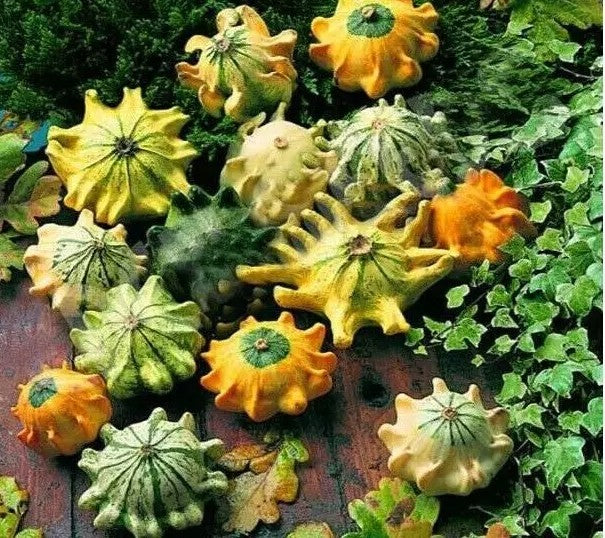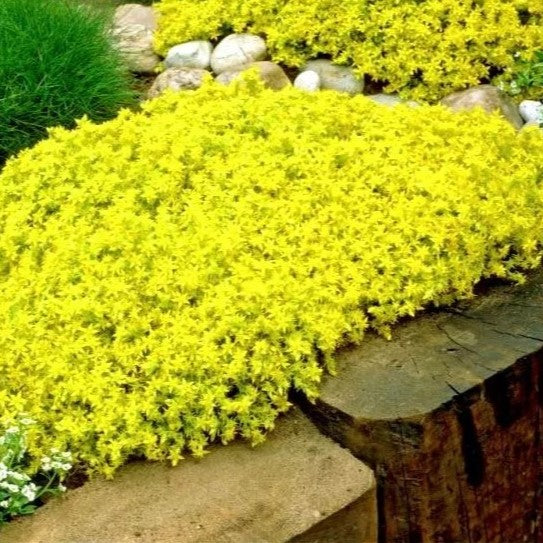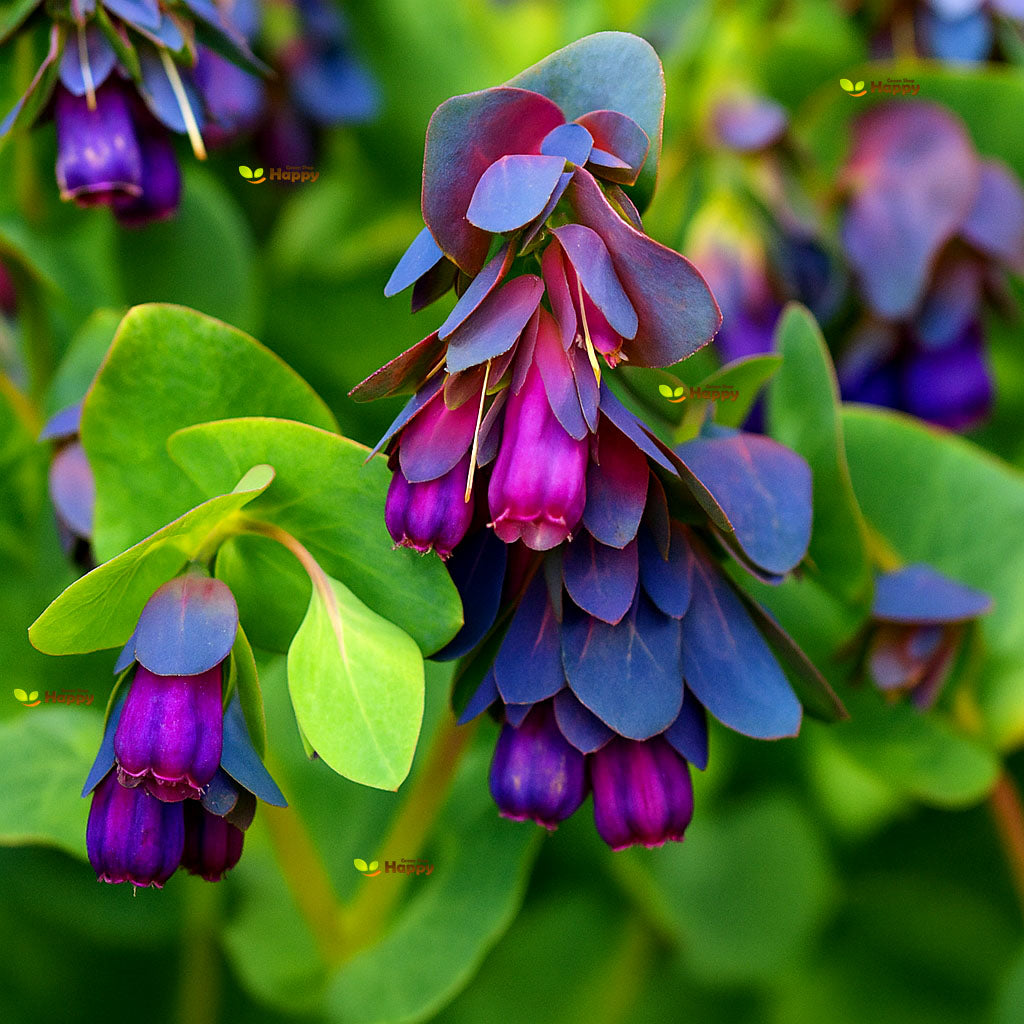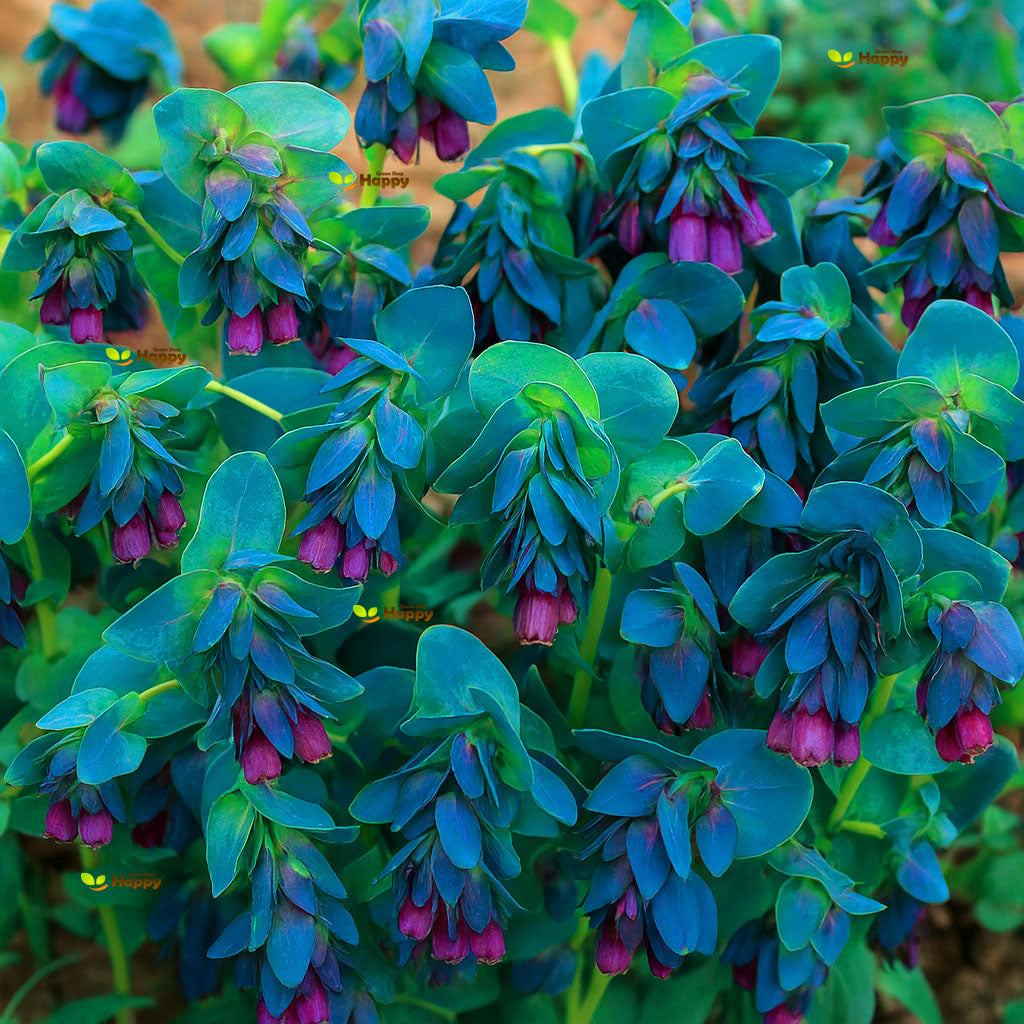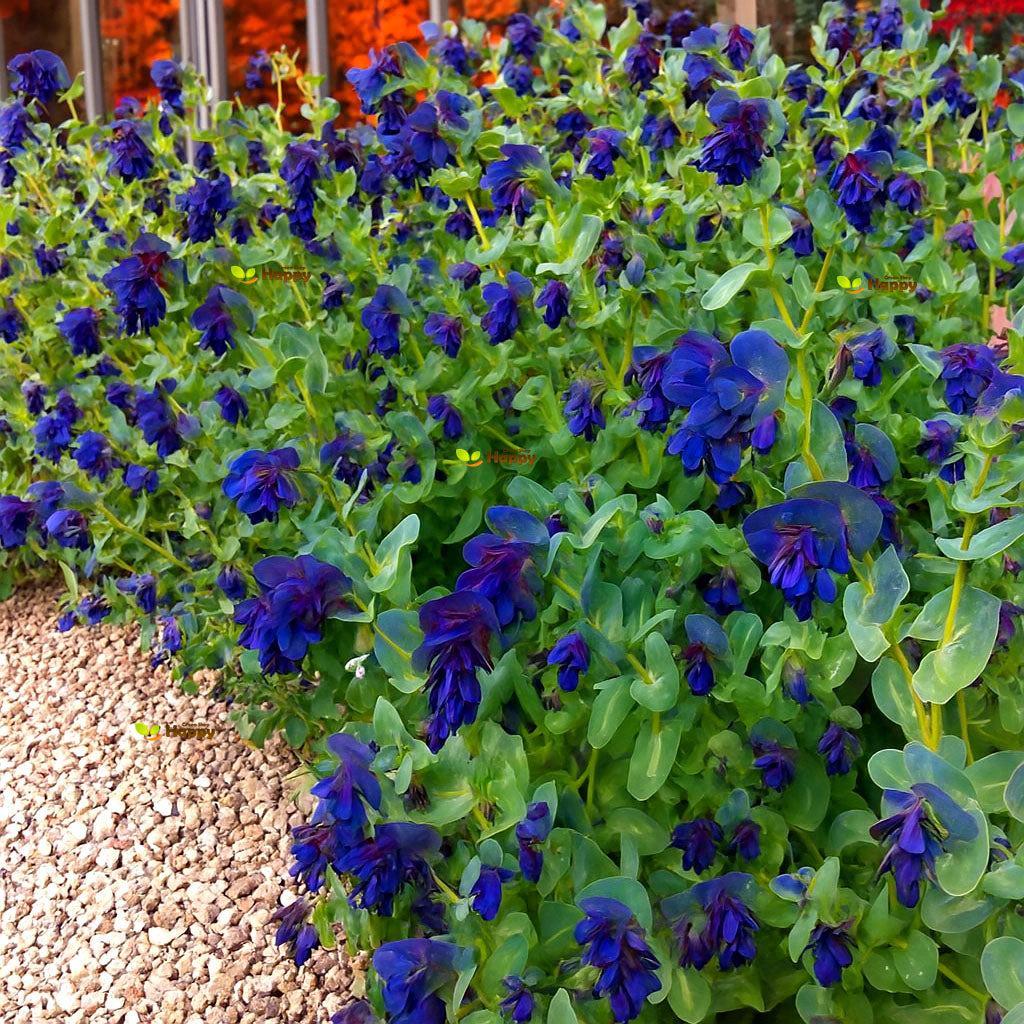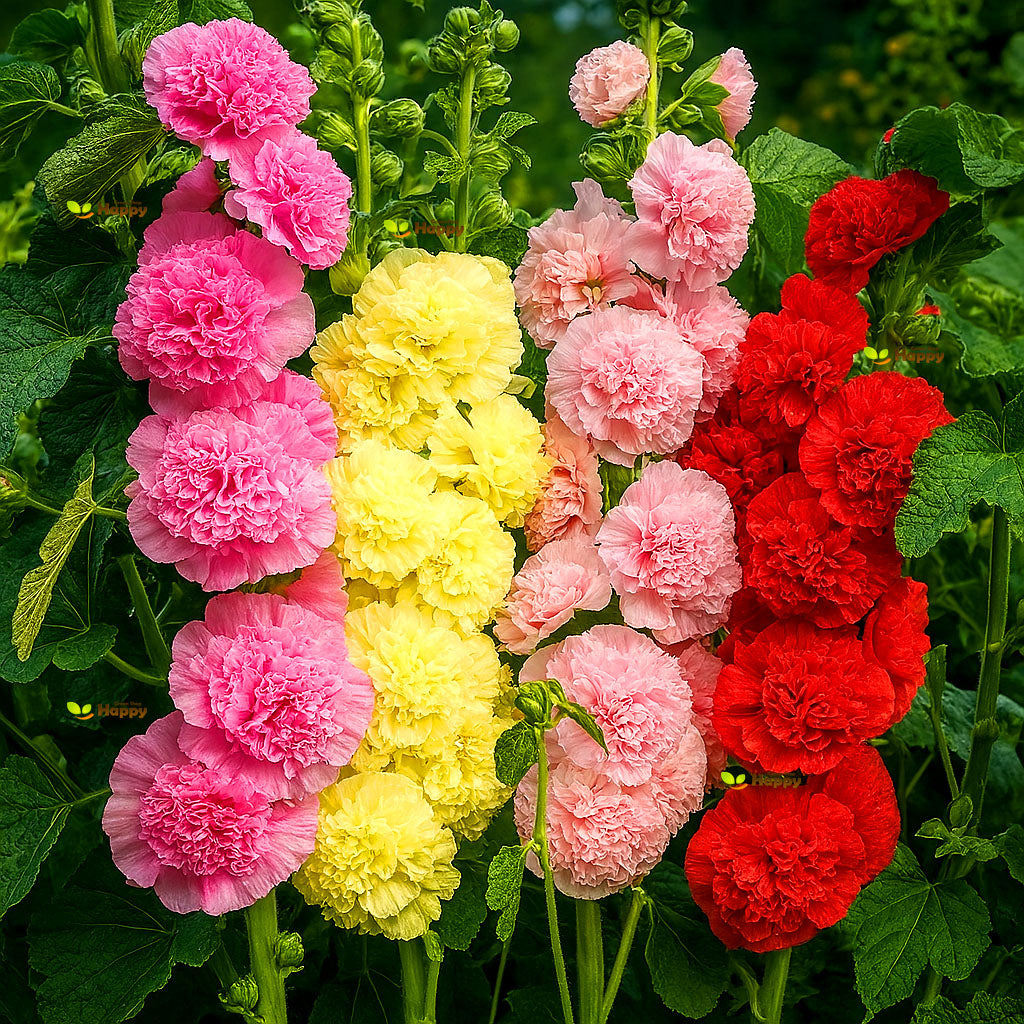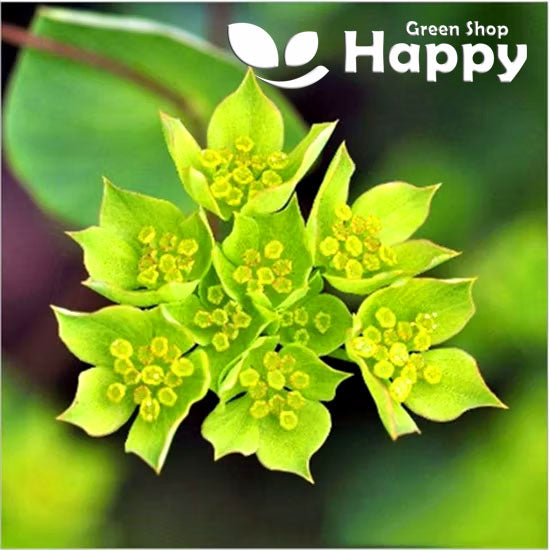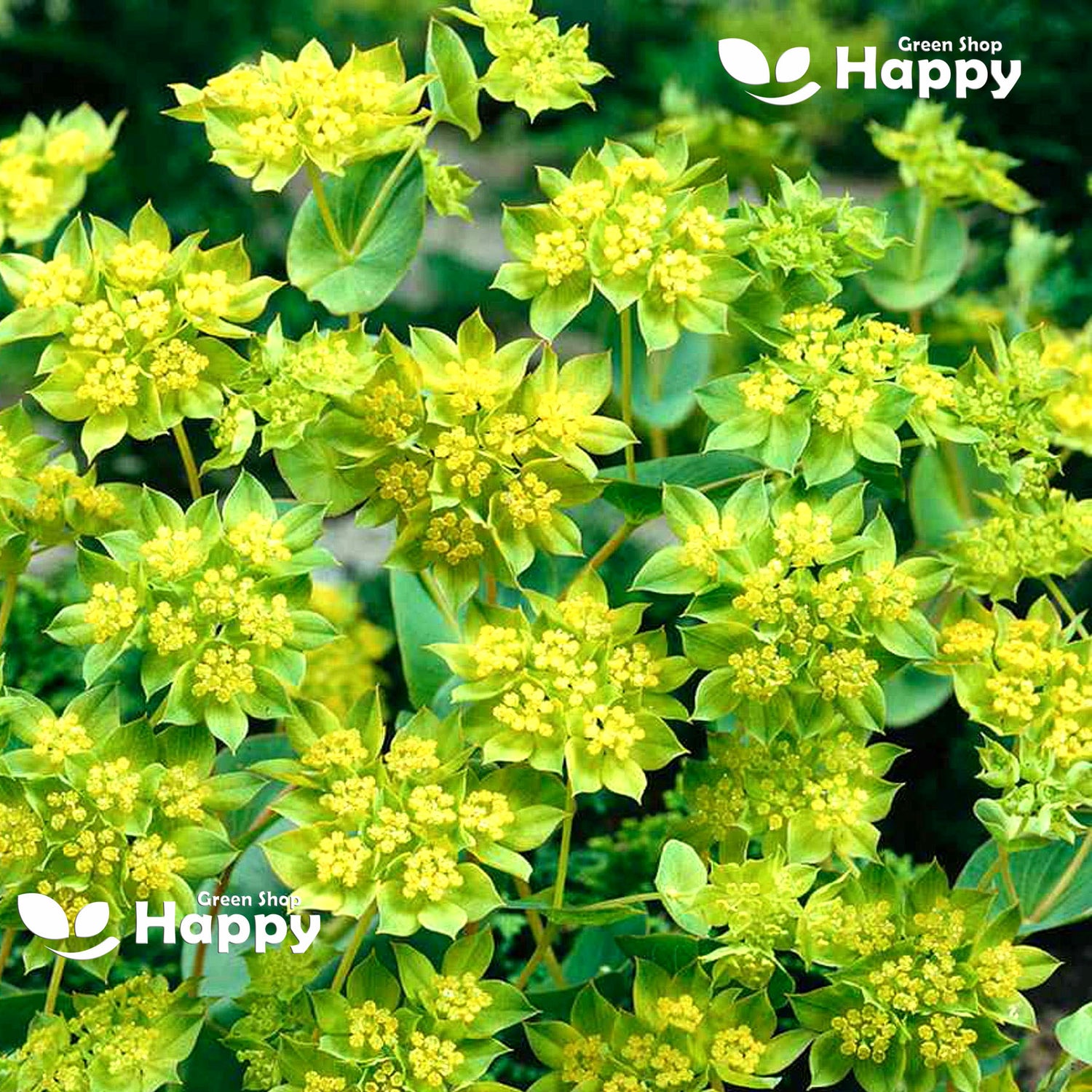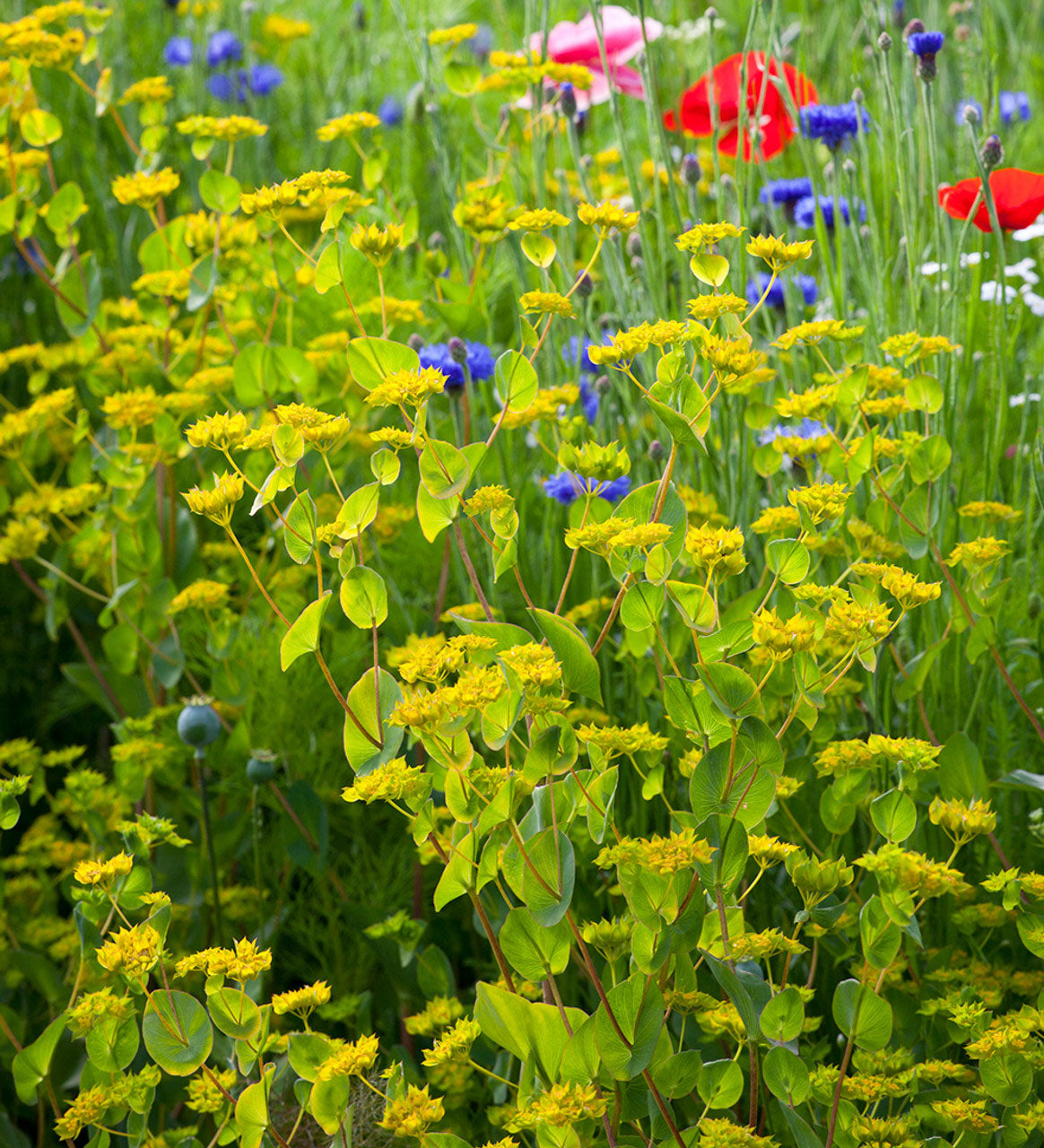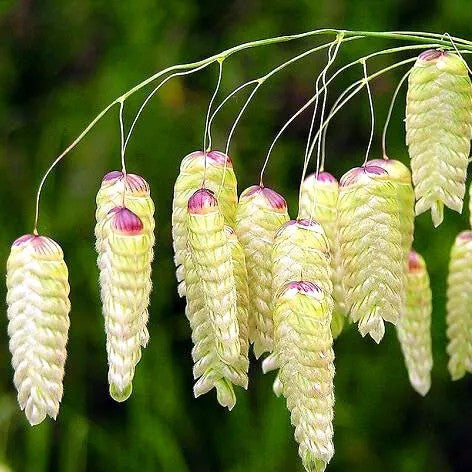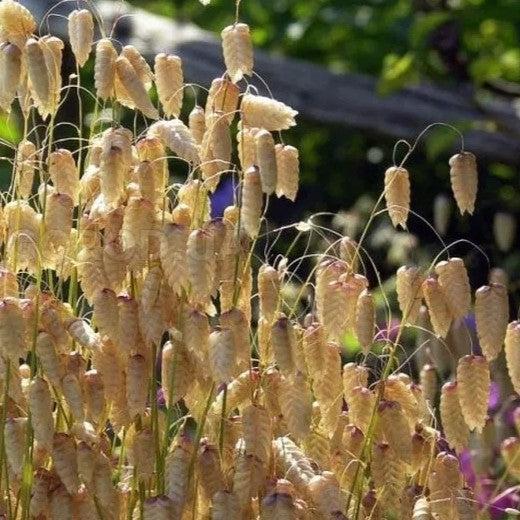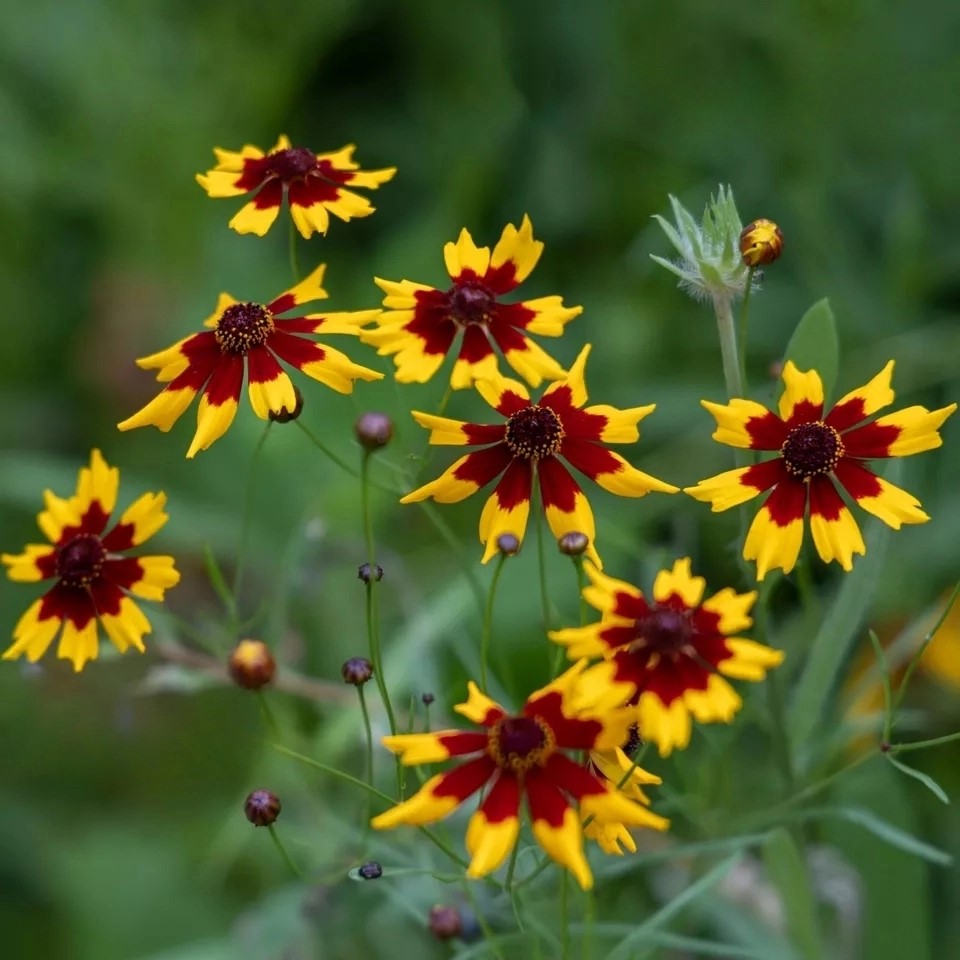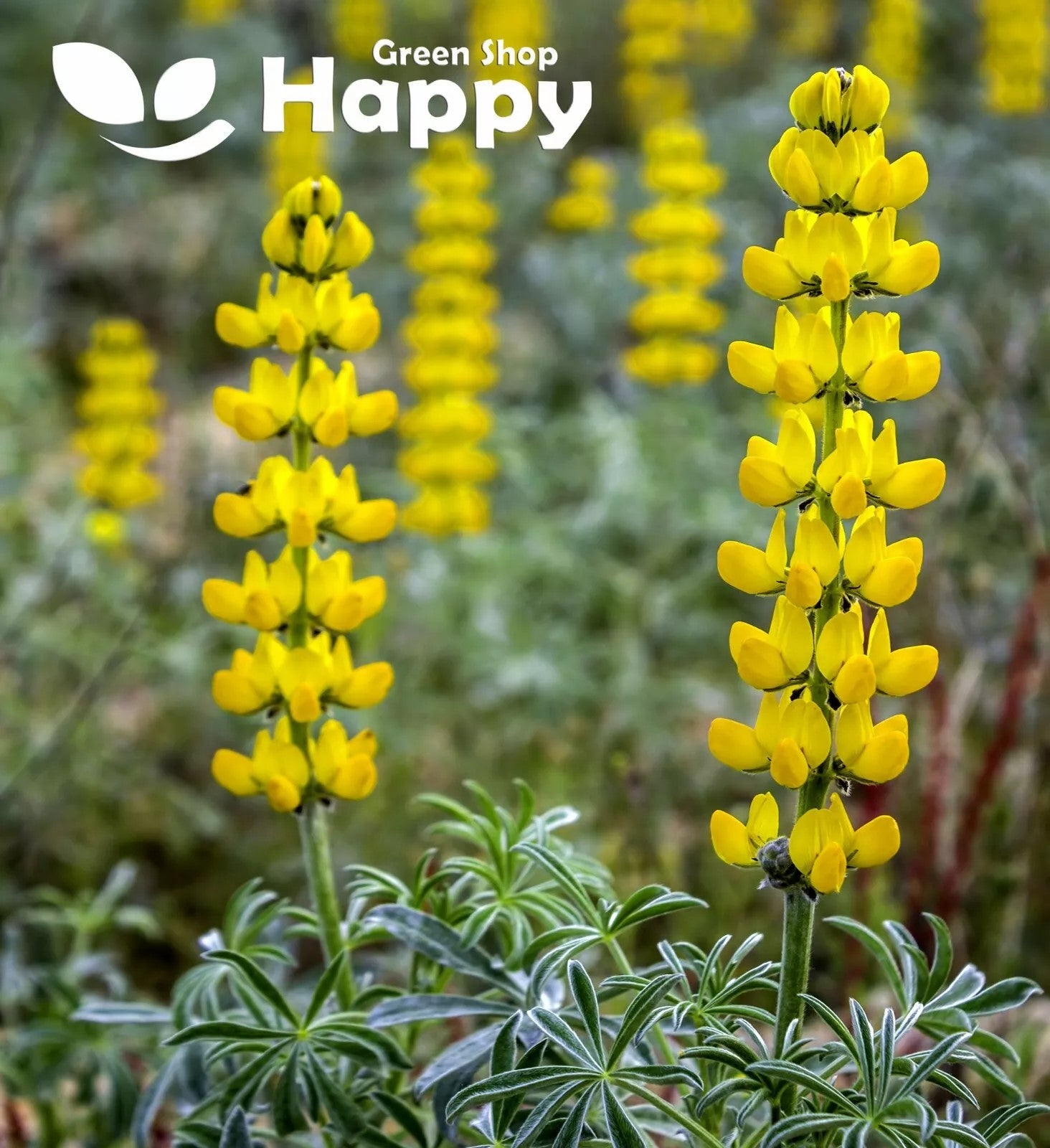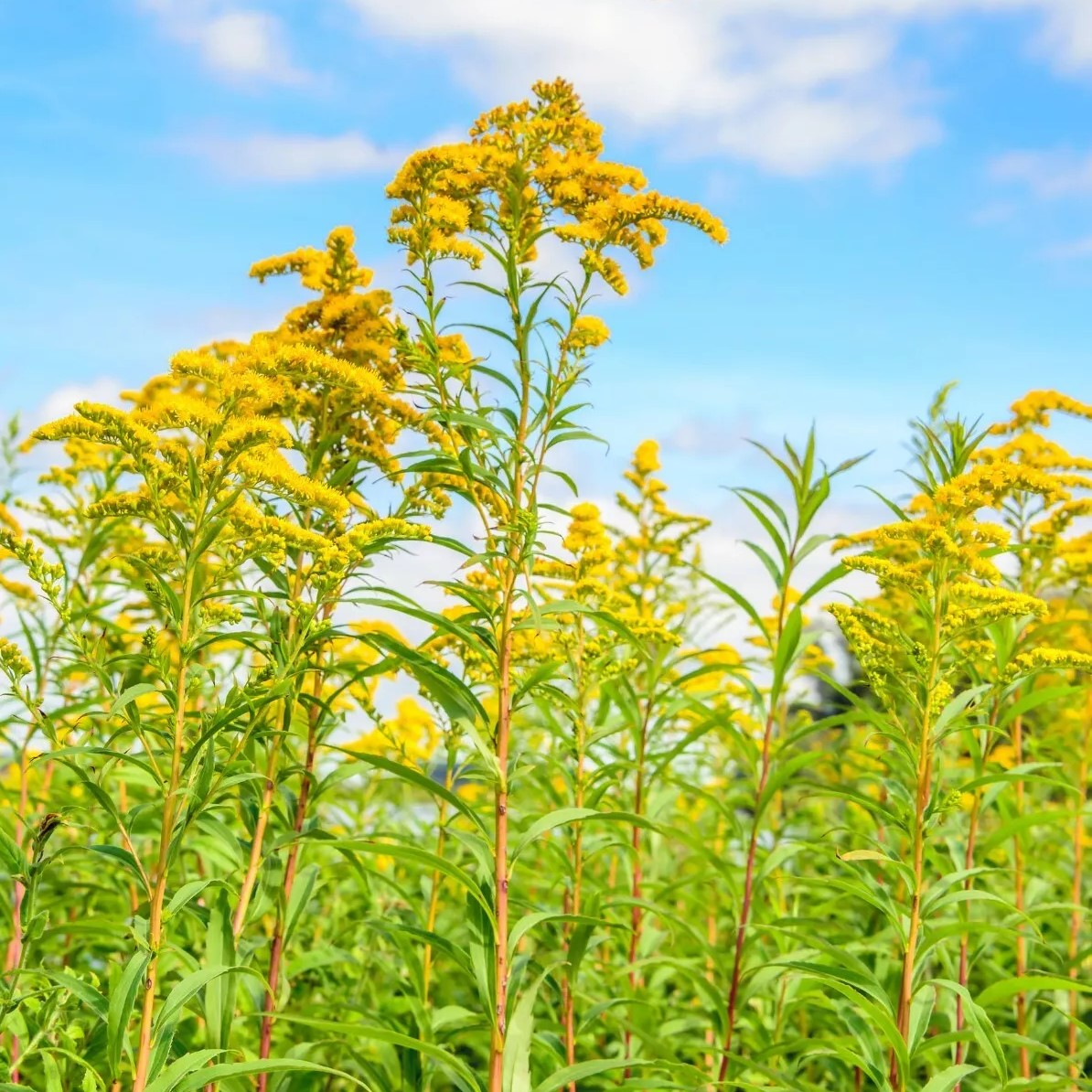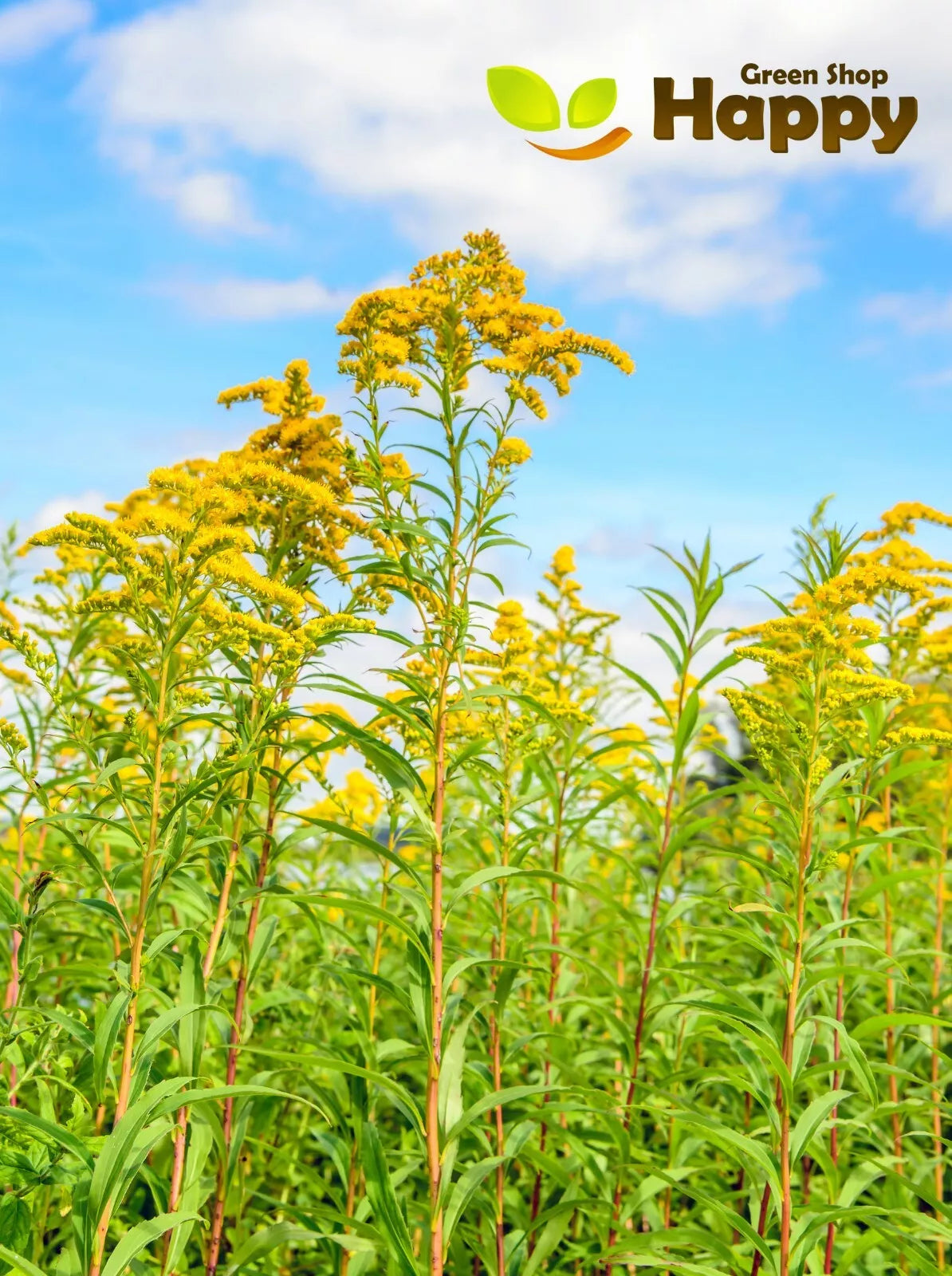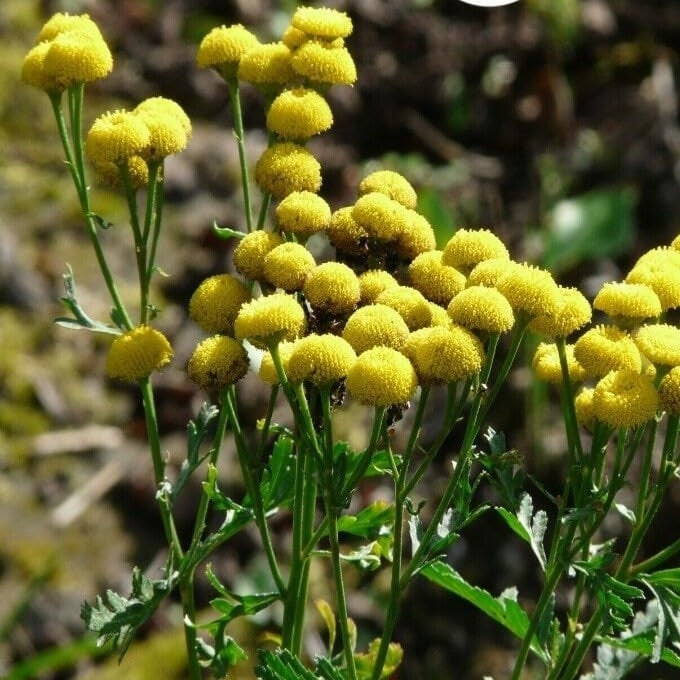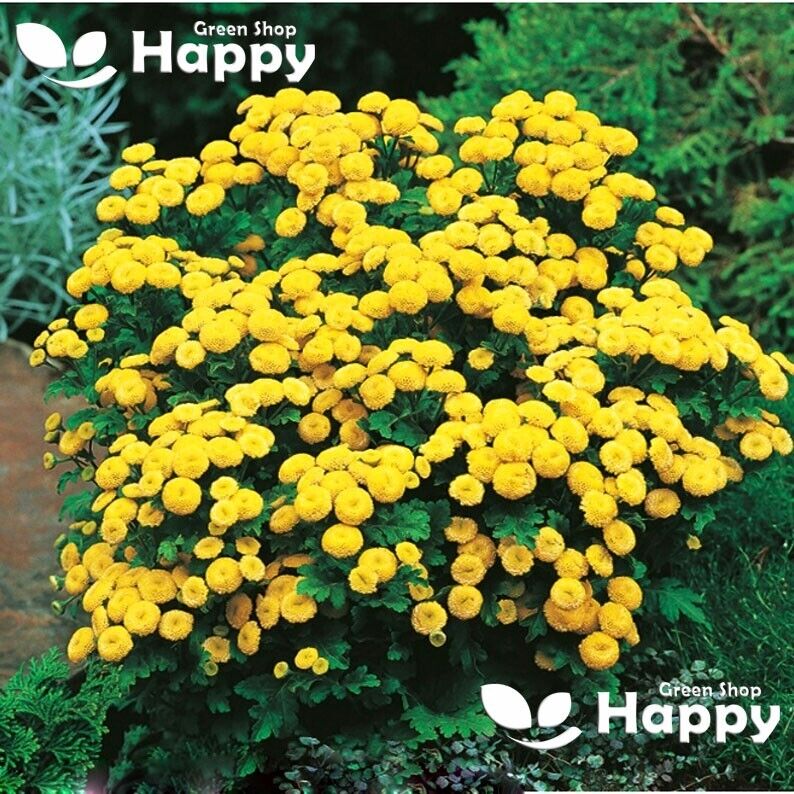Sort by:
121 products
121 products
Honeywort – Seeds (Cerinthe major)
Honeywort (Cerinthe major) is an eye-catching annual with striking blue-purple tubular flowers and silvery-green foliage. Loved by bees and other pollinators, it adds unique texture and color to borders, cottage gardens, and wildflower mixes. Fast-growing and low-maintenance, it thrives in sunny, well-drained spots.
Why Grow "Honeywort"
-
Striking blue-purple tubular flowers
-
Silvery-green, ornamental foliage
-
Attracts pollinators including bees and butterflies
-
Easy to grow and low-maintenance
Key Features
-
Type: Hardy annual (Cerinthe major)
-
Height: 40–60 cm
-
Flowering: June–September
-
Position: Full sun, well-drained soil
-
Uses: Borders, cottage gardens, wildflower mixes, pollinator gardens
Ideal For
-
Pollinator-friendly gardens
-
Cottage and naturalistic borders
-
Adding height and color contrast
-
Wildflower plantings
Sowing & Growing
-
Sow outdoors: March–May in prepared soil
-
Germination: 10–20 days at 18–22°C
-
Thin seedlings to 25 cm apart
-
Prefers full sun and well-drained soil
-
Deadhead to encourage prolonged flowering
Hollyhock ‘Chaters Double Triumph Mix’ Seeds (Althaea rosea)
A true cottage garden classic, the Hollyhock ‘Chaters Double Triumph Mix’ produces tall, stately flower spikes adorned with large, fully double blooms in a rich blend of colors – from soft pastels to vibrant shades. These majestic perennials (often grown as biennials) create a dramatic vertical accent at the back of borders, alongside walls, or in wildflower-style gardens.
What Makes It Special
-
Stunning double blooms in a wide range of colors
-
Impressive tall spires up to 1.8–2.5 m high
-
Attracts bees, butterflies, and pollinators
-
A long-standing favorite in cottage and traditional gardens
Key Features
-
Botanical name: Althaea rosea
-
Common name: Hollyhock Chaters Double Triumph Mix
-
Seed count: Approx. per pack (customizable)
-
Height/Spread: 180–250 cm tall, 50–60 cm spread
-
Position: Full sun; well-drained fertile soil
-
Flowering period: July – September (second year from sowing)
-
Lifespan: Hardy biennial/perennial
Ideal For
-
Cottage and traditional garden borders
-
Planting against walls and fences
-
Pollinator-friendly gardens
-
Creating dramatic vertical height in displays
Sowing Instructions
-
When to sow: Indoors March–May or directly outdoors May–June.
-
How to sow:
-
Sow seeds thinly in trays or pots of moist seed compost, cover lightly.
-
Keep at 15–20°C for germination (14–21 days).
-
Transplant seedlings when large enough, spacing 45–60 cm apart.
-
-
Care: Provide support in exposed areas. Deadhead faded flowers to encourage further blooming.
Hare’s Ear Seeds (Bupleurum rotundifolium ‘Griffithii’)
Add unique texture and vibrant color to your garden with Hare’s Ear (Bupleurum rotundifolium ‘Griffithii’). This annual produces clusters of bright green, airy umbels above fine foliage, creating a striking contrast in borders, cutting gardens, and wildflower meadows. Hardy and easy to grow, it attracts pollinators and adds architectural interest to your garden.
How to Grow
-
Sow directly outdoors in spring after the last frost.
-
Use well-drained soil in full sun.
-
Scatter seeds thinly and cover lightly with soil.
-
Keep soil moist until germination (10–14 days).
-
Thin seedlings to 25–30 cm apart once established.
-
Cut flowers regularly to encourage continued blooming.
Key Features
-
Airy green umbels for a unique garden texture
-
Hardy annual, easy to grow and long-flowering
-
Excellent for borders, cutting gardens, and meadows
-
Attracts bees, butterflies, and other pollinators
-
Architectural foliage adds interest to plantings
Ideal For
-
Flower borders and cottage gardens
-
Cutting gardens for fresh bouquets
-
Wildflower-style meadows and naturalized areas
-
Pollinator-friendly landscapes
Sowing
-
Best time: Spring outdoors
-
Germination: 10–14 days
-
Sow thinly, cover lightly, and keep soil moist
-
Prefers full sun and well-drained soil
Quick Tip
-
For a longer display, sow in successive batches every 2–3 weeks during spring.
Greater Quaking Grass Seeds (Briza maxima)
Greater Quaking Grass is a graceful ornamental grass admired for its nodding, heart-shaped seed heads that tremble and quiver in the breeze. This charming annual grass adds both texture and movement to garden displays and is a favourite for cutting and drying. Its unique seed heads shift from fresh green to golden shades as they mature, making it a versatile choice for borders, meadows, containers, and dried flower arrangements.
What Makes It Special
-
Distinctive quaking, heart-shaped seed heads
-
Creates elegant movement and sound in the garden
-
Excellent for cutting and drying
-
Easy to grow in sunny, well-drained sites
Key Features
-
Botanical name: Briza maxima
-
Common name: Greater Quaking Grass
-
Seed count: Approx. seeds per pack
-
Height/Spread: 45–60 cm tall, 20–30 cm spread
-
Position: Full sun; light, well-drained soil
-
Flowering period: June–August
Ideal For
-
Borders and ornamental grass displays
-
Wildflower and naturalistic gardens
-
Patio containers
-
Cut and dried flower arrangements
-
Adding movement to mixed planting schemes
Sowing Instructions
-
When to sow: March–May indoors, or April–June outdoors directly
-
How to sow:
-
Sow thinly in trays of seed compost or directly outdoors in prepared soil
-
Lightly cover with fine soil or compost
-
Keep moist until germination (14–21 days)
-
-
Transplant/Thin: Space plants 20–30 cm apart
-
Care: Low maintenance. Harvest seed heads when fully formed for use in arrangements.
Golden-Crown Coreopsis – Seeds (Coreopsis basalis)
Golden-Crown Coreopsis (Coreopsis basalis) is a vibrant annual with bright yellow, daisy-like flowers featuring a contrasting golden-orange center. It blooms profusely from early summer to autumn, attracting bees and butterflies. Easy to grow and drought-tolerant, it’s perfect for borders, wildflower gardens, and pollinator-friendly plantings.
Why Grow "Golden-Crown Coreopsis"
-
Bright yellow flowers with golden-orange centers
-
Long flowering season from summer to autumn
-
Attracts bees and butterflies
-
Easy to grow and drought-tolerant
Key Features
-
Type: Annual (Coreopsis basalis)
-
Height: 30–50 cm
-
Flowering: June–October
-
Position: Full sun
-
Uses: Borders, wildflower gardens, pollinator-friendly gardens, cut flowers
Ideal For
-
Pollinator gardens and wildflower meadows
-
Summer borders and bedding
-
Cut flower arrangements
-
Low-maintenance sunny spots
Sowing & Growing
-
Sow outdoors: March–May in prepared soil
-
Germination: 10–20 days at 18–22°C
-
Thin seedlings to 25–30 cm apart
-
Prefers full sun and well-drained soil
-
Deadhead to encourage prolonged flowering
Golden Yellow Lupine Seeds (Lupinus luteus)
Golden Yellow Lupine produces tall, striking spires of bright yellow pea-like flowers above lush green foliage. Hardy and fast-growing, it adds vertical interest and vibrant color to borders, cottage gardens, and wildflower meadows. Loved by bees and other pollinators, it also fixes nitrogen in the soil, improving garden fertility naturally.
What Makes It Special
-
Brilliant yellow flower spikes for dramatic garden color
-
Hardy, easy-to-grow perennial that attracts pollinators
-
Improves soil fertility through nitrogen fixation
Key Features
-
Botanical name: Lupinus luteus
-
Hardy annual or short-lived perennial
-
Height: 80–120 cm (32–48 in)
-
Bloom time: Early to mid-summer
Ideal For
-
Cottage gardens, perennial borders, and wildflower meadows
-
Pollinator-friendly plantings
-
Adding vertical interest and vibrant yellow color
Sowing
-
Sow indoors Mar–Apr or outdoors Apr–Jun
-
Nick or scarify seeds and soak overnight for faster germination
-
Cover lightly with soil and keep moist
-
Germination: 14–30 days at 15–20°C
-
Thin seedlings 30–40 cm apart
-
Flowers the first or second year
Golden Rod ‘Yellow Springs’ – 2000 Seeds (Solidago canadensis)
The Golden Rod ‘Yellow Springs’ is a hardy perennial that produces tall spikes of tiny golden-yellow flowers, creating a striking late-summer display. A magnet for bees and butterflies, it’s ideal for naturalistic gardens, meadows, and wildlife-friendly plantings. Easy to grow, drought-tolerant, and low-maintenance.
Why Grow ‘Yellow Springs’?
-
Tall, elegant spires of golden-yellow blooms
-
Attracts pollinators and supports biodiversity
-
Drought-tolerant and hardy perennial
-
Excellent for cut flowers and meadow planting
Key Features
-
Type: Perennial
-
Height: 100–150 cm
-
Flowering: July–September
-
Position: Full sun, well-drained soil
-
Uses: Borders, wildflower gardens, meadows, cut flowers
Ideal For
-
Pollinator-friendly gardens
-
Naturalized meadow plantings
-
Adding vertical height and late-season color
Sowing & Growing
-
Sow indoors: February–April, lightly cover seeds
-
Sow outdoors: April–June in prepared soil
-
Germination: 14–21 days at 18–22°C
-
Thin or transplant seedlings 30–40 cm apart
-
Cut back in autumn after flowering
Golden Buttons ‘Tansy’ – Seeds
(Tanacetum vulgare)
Golden Buttons ‘Tansy’ is a hardy perennial featuring clusters of bright golden-yellow button-like flowers atop tall stems. Its ferny foliage and long-lasting blooms make it ideal for borders, wildflower meadows, and pollinator-friendly gardens. Low-maintenance and drought-tolerant, it adds cheerful color and texture throughout summer.
Why Grow Golden Buttons ‘Tansy’?
-
Bright golden-yellow button-like flowers
-
Hardy, low-maintenance perennial
-
Attracts bees and butterflies
-
Ideal for borders, meadows, and pollinator gardens
Key Features
-
Type: Perennial
-
Height: 60–90 cm
-
Flowers: Summer
-
Position: Full sun
-
Soil: Well-drained, moderately fertile
Ideal For
-
Borders, wildflower meadows, and perennial beds
-
Pollinator-friendly gardens
-
Cut flower arrangements
-
Low-maintenance garden color
Sowing & Growing
-
Sow indoors: February–April in seed trays
-
Sow outdoors: April–May directly in prepared soil
-
Germination: 10–20 days at 18–20°C
-
Spacing: 30–40 cm apart
-
Care: Minimal; deadhead to prolong flowering and prevent self-seeding
Goldball seeds (Tanacetum parthenium)
Bring a cheerful burst of sunshine to your garden with Goldball, a striking variety of feverfew. This variety produces masses of perfectly rounded, button-like golden yellow blooms that stand out beautifully against lush green foliage. Compact and easy to grow, it’s ideal for beds, borders, or cutting gardens.
What Makes It Special
-
Unique globe-shaped golden blooms
-
Long-lasting flowers that brighten the garden
-
Loved by pollinators and great for cut arrangements
Key Features
-
Height: 40–60 cm
-
Hardy annual
-
Long flowering season
-
Easy to grow, low-maintenance
Ideal For
-
Borders and bedding displays
-
Cottage and wildflower gardens
-
Fresh cut flowers and dried arrangements
Sowing
-
Sow indoors Feb–Apr or direct outdoors Apr–Jun
-
Scatter seeds on the surface of fine soil – do not cover deeply
-
Keep moist; germinates in 10–20 days
-
Thin seedlings to 25–30 cm apart
Showing 63/121



